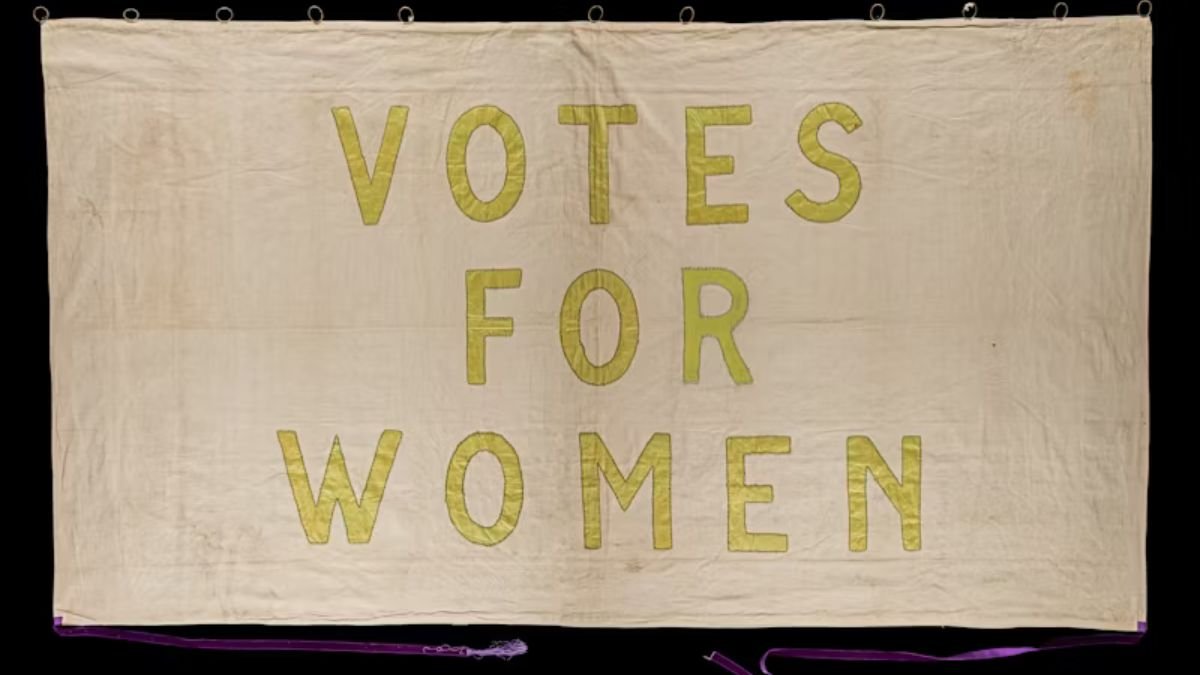The Women’s Suffrage Movement marked a watershed moment in the history of social justice, gender equality, and democratic development. This century-long struggle saw women and their allies work tirelessly to obtain the right to vote, tearing down societal barriers and transforming the worldwide political scene. The suffrage campaign, which was rooted in the larger context of women’s rights, served as both a reflection and a catalyst for substantial societal change. Its significance goes far beyond the right to vote; it represents a larger fight against systemic injustice and the quest of a more egalitarian society. By defying entrenched norms and uniting disparate people behind a single goal, the suffrage campaign became a beacon of hope and a tribute to human strength and tenacity.
Early beginnings
The women’s suffrage movement dates back to the late 18th and early 19th centuries, when Enlightenment values of liberty, equality, and justice inspired women to question their subservient roles in society. Influential figures such as Mary Wollstonecraft, author of A Vindication of the Rights of Woman (1792), set the intellectual framework by advocating for women’s education and equal political engagement.
The nineteenth century saw the growth of organised activism. In the United States, the 1848 Seneca Falls Convention, chaired by Elizabeth Cady Stanton and Lucretia Mott, is often considered as the formal start of the suffrage campaign. The convention produced the “Declaration of Sentiments,” which boldly proclaimed that “all men and women are created equal” and called for women’s voting rights. Across the Atlantic, British activists such as Millicent Fawcett and Emmeline Pankhurst led similar campaigns, using both peaceful and aggressive means.
Women Who Shaped The Movement
The suffrage campaign was powered by the unshakeable determination of several trailblazing women whose contributions stretched across continents and decades. In the United States, Elizabeth Cady Stanton and Susan B. Anthony were instrumental in founding the National Woman Suffrage Association (NWSA), which ceaselessly advocated for constitutional amendments. Sojourner Truth, a former enslaved woman and notable abolitionist, famously declared, “Ain’t I a Woman?” during a groundbreaking speech, connecting the suffrage movement to the fight for racial justice.
In the United Kingdom, Millicent Fawcett led the National Union of Women’s Suffrage Societies (NUWSS), which advocated for nonviolent reform, while Emmeline Pankhurst and her daughters Christabel and Sylvia founded the Women’s Social and Political Union (WSPU), which used militant tactics to demand immediate action. Their slogan, “Deeds, not words,” summed up their philosophy.
Globally, individuals such as Sarojini Naidu in India and Kate Sheppard in New Zealand have played revolutionary roles. Naidu, dubbed the “Nightingale of India,” rallied women throughout India’s independence war, equating suffrage to national liberation. Kate Sheppard’s involvement in New Zealand’s suffrage campaign helped the country become the first to offer women the right to vote in 1893. Women like Clara Zetkin and Rosa Luxemburg in Germany combined suffrage with broader socialist movements, campaigning for gender and class equality.
The Struggle and Strategies
The path to suffrage was filled with obstacles. Women encountered strong pushback from ingrained societal standards, legal impediments, and political slowness. Opponents claimed that providing women the right to vote would upset conventional family structures, jeopardise societal stability, and violate natural gender roles.
In response, suffragists used a range of techniques. Peaceful advocacy groups, such as the National American Woman Suffrage Association (NAWSA) in the United States, relied on petitions, public lectures, and lobbying lawmakers. Simultaneously, radical organisations such as the Women’s Social and Political Union (WSPU) in Britain used aggressive methods such as hunger strikes, marches, and civil disobedience. These actions frequently resulted in arrests and imprisonment, focussing public attention on their cause.
Key milestones
Despite numerous defeats, the suffrage movement made substantial progress over time. In 1893, New Zealand became the first self-governing country to allow women to vote. Australia followed in 1902, with Indigenous women generally excluded. In Finland, women got the ability to vote and run for parliamentary office in 1906.
In the United States, the movement gained traction in the early twentieth century, helped by the Progressive Era’s emphasis on change. The ratification of the 19th Amendment in 1920, after decades of hard agitation, was a watershed moment that granted millions of American women the right to vote. In the United Kingdom, limited suffrage was granted in 1918, and full voting rights were obtained in 1928.
Global Expansion
The impact of the suffrage movement went well beyond the Western world. In India, women’s suffrage was an important part of the larger struggle for independence. Leaders such as Sarojini Naidu championed the cause, which culminated in women’s voting rights after India gained independence in 1947. Similarly, women throughout Latin America, Africa, and Asia campaigned for their political rights, frequently alongside anti-colonial and civil rights campaigns.
Intersectionality and inclusivity
The suffrage movement wasn’t without flaws. Early campaigns frequently prioritised the rights of white, middle-class women, while excluding women of colour, working-class women, and others who faced several forms of discrimination. In the United States, for example, the 19th Amendment did not remove vote restrictions for Black women, who continued to experience racial discrimination and disenfranchisement, notably in the South.
Recognising these limits, subsequent waves of feminist action attempted to address the interconnections of race, class, and gender, emphasising the importance of an inclusive approach to women’s rights.
Legacy and Continued Struggles
The suffrage movement’s achievements left an enduring effect on history, laying the groundwork for further gains in gender equality. Women’s right to vote has given generations the ability to engage in political processes, change policy, and challenge patriarchal norms.
However, the fight for gender equality is not over. Women’s political representation is disproportionately low in many nations, and systemic hurdles prevent full involvement. Issues like gender-based violence, economic disparities, and reproductive rights highlight the continual need for advocacy and reform.
The Women’s Suffrage Movement exemplifies the power of collective action and the ongoing fight for justice. It reminds us that progress, while often gradual and contentious, is possible with resilience, solidarity, and a firm commitment to equality. As we reflect on this historic movement, we must honour its pioneers, recognise its complexities, and find inspiration for the challenges that lie ahead. Beyond its immediate accomplishments, the suffrage movement represents the possibility for dramatic change when people work together for a similar goal. The freedom to vote, long a faraway dream for many, is today a pillar of democracy, a legacy of bravery and commitment. This legacy encourages us to be watchful and proactive, ensuring that the progress made continues to inspire and drive future generations toward a more just and inclusive world.





